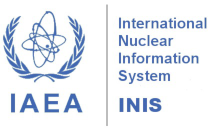Desenvolvimento De Um Simulador Antropomórfico De Olho Por Impressão 3D
DOI:
https://doi.org/10.15392/2319-0612.2024.2637Palavras-chave:
Anthropomorphic phantom, dosimetry, eye, 3D printing, radiotherapyResumo
O objetivo deste trabalho foi a construção de um simulador antropomórfico tecido-equivalente por impressão 3D para permitir dosimetria com filmes radiocrômicos do aparelho óptico em radioterapia com feixes externos. Foram desenvolvidas fatias baseadas no simulador de referência ATOM® e que devem ser com ele utilizadas. A impressão 3D em ácido polilático (PLA) foi utilizada para representação dos tecidos moles, enquanto uma mistura de gesso, sal e água foi usada para os tecidos ósseos do crânio. A validação do simulador foi realizada por avaliações de unidades de Hounsfield (HU) para verificação de homogeneidade e compatibilidade com o simulador ATOM. A homogeneidade foi atestada ao apresentar 28.1% de variação na peça em PLA e 6.6% na mistura de gesso. Os resultados também demonstraram compatibilidade com os materiais do simulador ATOM®. O simulador foi devidamente construído e validado, podendo ser testados como sistemas dosimétricos para a avaliação das doses na região ocular nos procedimentos radioterapêuticos.
Downloads
Referências
[1] CHENG, C. Y.; HSU, Wen-Ming. Incidence of eye cancer in Taiwan: an 18-year review. Eye, v. 18, n. 2, p. 152-158, 2004. DOI: https://doi.org/10.1038/sj.eye.6700619
[2] KALIKI, S.; SHIELDS, C. L. Uveal melanoma: relatively rare but deadly cancer. Eye, v. 31, n. 2, p. 241-257, 2017. DOI: https://doi.org/10.1038/eye.2016.275
[3] AHMAD, S. M.; ESMAELI, B. Metastatic tumors of the orbit and ocular adnexa. Current opinion in ophthalmology, v. 18, n. 5, p. 405-413, 2007. DOI: https://doi.org/10.1097/ICU.0b013e3282c5077c
[4] SHIELDS, J. A.; SHIELDS, C. L.; SCARTOZZI, R. Survey of 1264 patients with orbital tumors and simulating lesions: The 2002 Montgomery Lecture, part 1. Ophthalmology, v. 111, n. 5, p. 997-1008, 2004. DOI: https://doi.org/10.1016/j.ophtha.2003.01.002
[5] LUCENA, E. et al. Epidemiology of uveal melanoma in Brazil. International Journal of Retina and Vitreous, v. 6, p. 1-8, 2020. DOI: https://doi.org/10.1186/s40942-020-00261-w
[6] RIBEIRO, K. C. B.; ANTONELI, C. B. G. Trends in eye cancer mortality among children in Brazil, 1980–2002. Pediatric blood & cancer, v. 48, n. 3, p. 296-305, 2007. DOI: https://doi.org/10.1002/pbc.20826
[7] THOMSON, R. M. et al. AAPM recommendations on medical physics practices for ocular plaque brachytherapy: report of task group 221. Medical Physics, v. 47, n. 5, p. e92-e124, 2020. DOI: https://doi.org/10.1002/mp.13996
[8] CHIU‐TSAO, S. et al. Dosimetry of 125I and 103Pd COMS eye plaques for intraocular tumors: Report of Task Group 129 by the AAPM and ABS. Medical physics, v. 39, n. 10, p. 6161-6184, 2012. DOI: https://doi.org/10.1118/1.4749933
[9] STANNARD, C. et al. Radiotherapy for ocular tumours. Eye, v. 27, n. 2, p. 119-127, 2013. DOI: https://doi.org/10.1038/eye.2012.241
[10] MUNIER, F. L. et al. New developments in external beam radiotherapy for retinoblastoma: from lens to normal tissue‐sparing techniques. Clinical & experimental ophthalmology, v. 36, n. 1, p. 78-89, 2008. DOI: https://doi.org/10.1111/j.1442-9071.2007.01602.x
[11] JEGANATHAN, V. S. E.; WIRTH, A.; MACMANUS, M. P. Ocular risks from orbital and periorbital radiation therapy: a critical review. International Journal of Radiation Oncology* Biology* Physics, v. 79, n. 3, p. 650-659, 2011. DOI: https://doi.org/10.1016/j.ijrobp.2010.09.056
[12] DURKIN, S. R. et al. Ophthalmic and adnexal complications of radiotherapy. Acta ophthalmologica Scandinavica, v. 85, n. 3, p. 240-250, 2007. DOI: https://doi.org/10.1111/j.1600-0420.2006.00822.x
[13] SCOCCIANTI, S. et al. Organs at risk in the brain and their dose-constraints in adults and in children: a radiation oncologist’s guide for delineation in everyday practice. Radiotherapy and Oncology, v. 114, n. 2, p. 230-238, 2015. DOI: https://doi.org/10.1016/j.radonc.2015.01.016
[14] ABOUAF, L. et al. Standard-fractionated radiotherapy for optic nerve sheath meningioma: visual outcome is predicted by mean eye dose. International Journal of Radiation Oncology* Biology* Physics, v. 82, n. 3, p. 1268-1277, 2012. DOI: https://doi.org/10.1016/j.ijrobp.2011.04.010
[15] BUTSON, M. J. et al. Measurement of radiotherapy superficial X-ray dose under eye shields with radiochromic film. Physica Medica, v. 24, n. 1, p. 29-33, 2008. DOI: https://doi.org/10.1016/j.ejmp.2007.11.001
[16] CARINOU, E. et al. Eye lens monitoring for interventional radiology personnel: dosimeters, calibration and practical aspects of Hp (3) monitoring. A 2015 review. Journal of Radiological Protection, v. 35, n. 3, p. R17, 2015. DOI: https://doi.org/10.1088/0952-4746/35/3/R17
[17] STOLARCZYK, L. et al. Assessment of undesirable dose to eye-melanoma patients after proton radiotherapy. Radiation measurements, v. 45, n. 10, p. 1441-1444, 2010. DOI: https://doi.org/10.1016/j.radmeas.2010.05.029
[18] HASANZADEH, H.; ABEDELAHI, A. Introducing a simple tissue equivalent anthropomorphic phantom for radiation dosimetry in diagnostic radiology and radiotherapy. Journal of Paramedical Sciences, v. 2, n. 4, p. 25-29, 2011.
[19] MCGARRY, C. K. et al. Tissue mimicking materials for imaging and therapy phantoms: a review. Physics in Medicine & Biology, v. 65, n. 23, p. 23TR01, 2020. DOI: https://doi.org/10.1088/1361-6560/abbd17
[20] DEWERD, L. A.; KISSICK M. The phantoms of medical and health physics. Berlin: Springer, 2014. DOI: https://doi.org/10.1007/978-1-4614-8304-5
[21] WINSLOW, J. F. et al. Construction of anthropomorphic phantoms for use in dosimetry studies. Journal of Applied Clinical Medical Physics, v. 10, n. 3, p. 195-204, 2009. DOI: https://doi.org/10.1120/jacmp.v10i3.2986
[22] MCGARRY, Conor K. et al. Tissue mimicking materials for imaging and therapy phantoms: a review. Physics in Medicine & Biology, v. 65, n. 23, p. 23TR01, 2020. DOI: https://doi.org/10.1088/1361-6560/abbd17
[23] ICRU. Report 44: Tissue Substitutes in Radiation Dosimetry and Measurement. Journal of International Commission on Radiation Units and Measurements, v. 23, 1989. DOI: https://doi.org/10.1093/jicru_os23.1.184
[24] MADAMESILA, J. et al. Characterizing 3D printing in the fabrication of variable density phantoms for quality assurance of radiotherapy. Physica Medica, v. 32, n. 1, p. 242-247, 2016. DOI: https://doi.org/10.1016/j.ejmp.2015.09.013
[25] KAMOMAE, T. et al. Three-dimensional printer-generated patient-specific phantom for artificial in vivo dosimetry in radiotherapy quality assurance. Physica Medica, v. 44, p. 205-211, 2017. DOI: https://doi.org/10.1016/j.ejmp.2017.10.005
[26] PEREIRA, D. D. et al. Validation of polylactic acid polymer as soft tissue substitutive in radiotherapy. Radiation Physics and Chemistry, v. 189, p. 109726, 2021. DOI: https://doi.org/10.1016/j.radphyschem.2021.109726
[27] PEREIRA, D. D. et al. Development of an anthropomorphic phantom based on 3D printing for assessment of dose delivered to the eye and adjacent tissues. Radiation Physics and Chemistry, v. 199, p. 110292, 2022. DOI: https://doi.org/10.1016/j.radphyschem.2022.110292
[28] PEREIRA, D. D. Desenvolvimento de um simulador antropomórfico baseado em impressão 3D para dosimetria em radioterapia de olho. Dissertação (mestrado) - Instituto de Radioproteção e Dosimetria, Rio de Janeiro, 2021.
[29] Prusa Research. Original Prusa i3 MK3S. 2019. Disponível em: https://www.prusa3d.com/category/original-prusa-i3-mk3s/. Acesso em: 10 de Junho de 2024.
Downloads
Publicado
Edição
Seção
Categorias
Licença
Direitos autorais (c) 2024 André Fidelis, Dirceu Pereira, Luiz da Rosa, Simone Coutinho Cardoso

Este trabalho está licenciado sob uma licença Creative Commons Attribution 4.0 International License.
Declaro que o presente artigo é original, não tendo sido submetido à publicação em qualquer outro periódico nacional ou internacional, quer seja em parte ou em sua totalidade. Declaro, ainda, que uma vez publicado na revista Brazilian Journal of Radiation Sciences, editada pela Sociedade Brasileira de Proteção Radiológica, o mesmo jamais será submetido por mim ou por qualquer um dos demais co-autores a qualquer outro periódico. Através deste instrumento, em meu nome e em nome dos demais co-autores, porventura existentes, cedo os direitos autorais do referido artigo à Sociedade Brasileira de Proteção Radiológica, que está autorizada a publicá-lo em meio impresso, digital, ou outro existente, sem retribuição financeira para os autores.
Licença
Os artigos do BJRS são licenciados sob uma Creative Commons Atribuição 4.0 Licença Internacional, que permite o uso, compartilhamento, adaptação, distribuição e reprodução em qualquer meio ou formato, desde que você dê o devido crédito ao (s) autor (es) original (is) e à fonte, forneça um link para a licença Creative Commons, e indique se mudanças foram feitas. As imagens ou outro material de terceiros neste artigo estão incluídos na licença Creative Commons do artigo, a menos que indicado de outra forma em uma linha de crédito para o material. Se o material não estiver incluído no licença Creative Commons do artigo e seu uso pretendido não é permitido por regulamentação legal ou excede o uso permitido, você precisará obter permissão diretamente do detentor dos direitos autorais. Para visualizar uma cópia desta licença, visite http://creativecommons.org/licenses/by/4.0/






















